If your inbox is anything like mine, it’s probably overflowing with newsletters, sales emails, promotions, ads, courses, and other messages. In other words, lots of competition.
Additionally, people’s attention spans are dwindling (20 years ago, our attention span on a screen was 150 seconds; today — it’s 47).
So, with all that competition for attention in the inbox, how will your monthly or weekly newsletter stand out?
It’s all about nailing that introduction—hooking your readers so that they feel you’re talking directly to them and that they can’t wait to read more.
That sounds like a tall order, but crafting the perfect introduction doesn’t have to be a Herculean task.Today, we will review eight newsletter introduction examples you can use to hook your readers and keep them coming back to your newsletter.
The best part about these examples is that you can use our email newsletter templates to create eye-catching, engaging newsletters quickly and effectively.
#1 Year-End Review / Highlight a Recent Achievement or Milestone
If your business had a great year last year or achieved a significant milestone, you should showcase your progress and celebrate the big wins with your audience.
Why?
Sharing your journey in your monthly newsletter fosters a deeper connection and improves your authority, which turns casual readers into a loyal community. Here’s how to make the most of a Year End Review template:
- Showcase Milestones: Briefly highlight your top achievements or milestones to demonstrate progress and thank your audience.
- Visuals: Use images, infographics, graphs, or charts to illustrate your successes, making the email visually engaging and easy to scan (like a revenue graph with all the lines going up).
- Authentic Reflection: Don’t just say everything is all wine and roses. Mention challenges you’ve overcome, adding authenticity and relatability.
- Preview Upcoming Goals: People want to hear about the future. Tease next year’s plans to build anticipation and keep your audience engaged.
- Interactive Element: Ask subscribers to share their favorite moment or what they look forward to, boosting engagement.
This approach turns your Year End Review into a tool for storytelling, engagement, and setting the stage for future communications while keeping it concise and focused.
The Yearly Summary newsletter template is my go-to template for announcements and reviews.

#2 Ask a Thought-provoking Question
While a compelling narrative undoubtedly has the power to draw readers in, opening your newsletter with a thought-provoking question can also be a powerful tool for engagement.
This technique can stimulate curiosity, encourage interaction, and set the tone for the rest of your newsletter content. Here are some examples.
- “Ever wondered how to invest in real estate with no money?” This question intrigues the reader, inviting them to dive deeper into your newsletter.
- “What if you could increase your productivity by 60%?” Here, you’re teasing a possible benefit readers can discover in the newsletter.
“Are you aware of the latest changes in email marketing trends?” This question positions your newsletter as a valuable source of up-to-date information.
#3 Tell People Exactly What to Do
There’s too much choice in the world today. When people sign up for your newsletter, they trust your expertise enough that you won’t steer them wrong with some recommendations. All you have to do next is tell your readers exactly what you think about your chosen topic and tell them to make a buying decision.
Here are some ideas for this type of newsletter:
- Share innovative research or insights in your field to establish authority.
- Provide unique perspectives on trending topics to demonstrate thought leadership.
- Offer actionable advice based on your experience to exhibit your in-depth knowledge.
Here is an excellent example of recommendations in the intro from the RealGood newsletter.
#4 Start With a Promotion That Has Urgency or a Countdown
A unique newsletter introduction example is to have a countdown or a sense of urgency for whatever you are promoting in this newsletter. Maybe you are having a sale on the course you offer or an end-of-year inventory blow-out.
Ever noticed how a ticking clock can make your heart race a little faster? That’s the magic of urgency, especially when it comes to promotions. It’s like telling your subscribers, “Hey, this incredible deal? It’s not going to last forever.”
Suddenly, everyone’s paying attention.
Adding a countdown timer to your promotion can seriously boost click-through and conversion rates. Studies have shown that urgency can dramatically increase decision-making speed, pushing those on the fence to click your CTA. We’re talking about making people click, subscribe, buy, or take whatever action you desire much more quickly.
Here’s how it works in your newsletter:
- Picture a big, bold countdown clock ticking away. It’s not just a reminder; it’s a visual cue that time is running out.
- Pair that with a killer offer, and you have a recipe for success. “Sale ends in 3 hours!” “Last chance to grab your spot!” These aren’t just phrases but calls to action with a deadline.
- If your readers want to buy, your newsletter should have a call-to-action button at the end of its introduction (and again at the very end).
Using our newsletter templates, you can add a countdown timer in seconds. Just drag and drop the Countdown icon into any newsletter template. That’s it! How’s that for taking your dull newsletter to the next level?
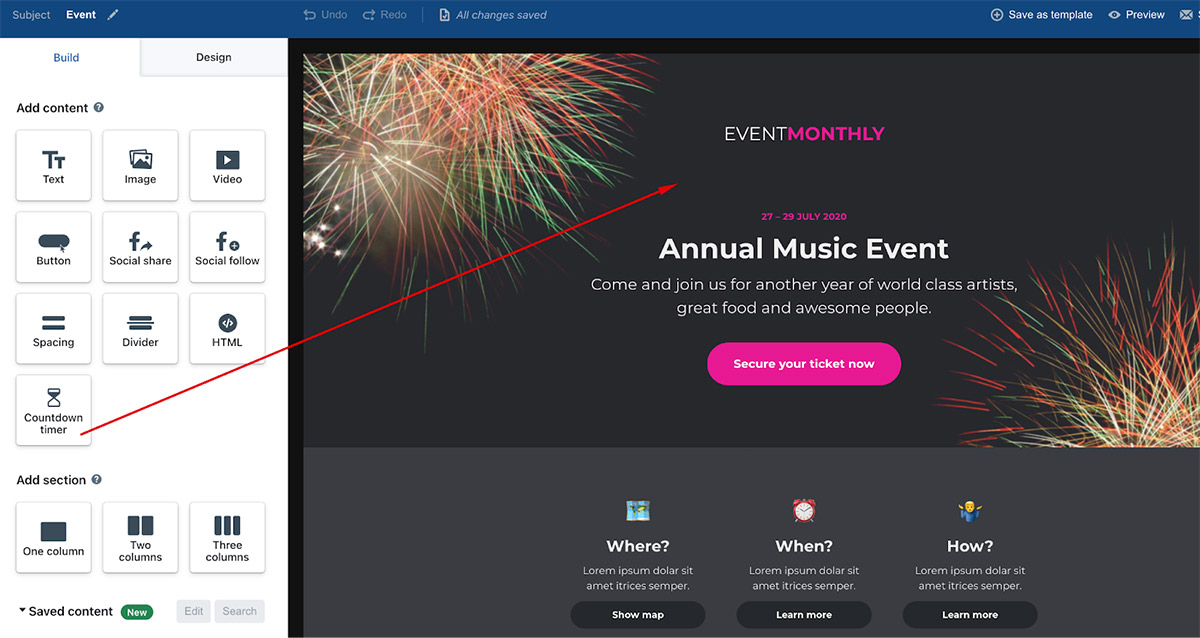
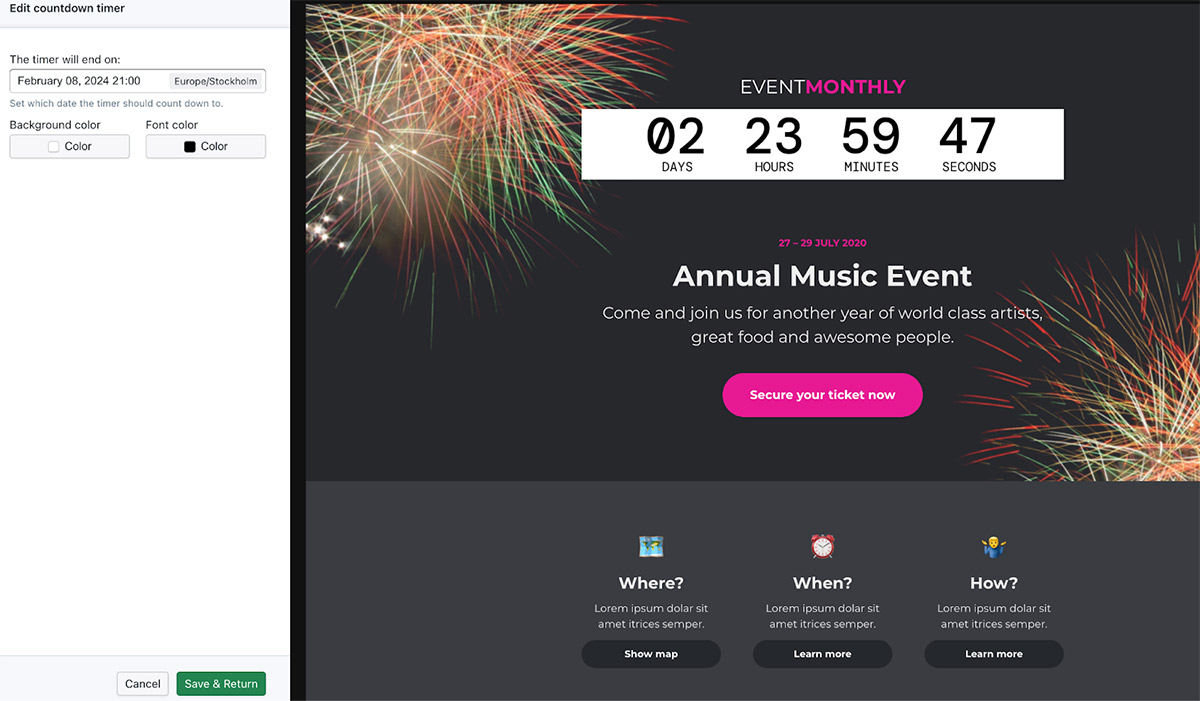
#5 Tying Current Events to Your Newsletter
Another newsletter introduction example to try is to engage your reader’s interest by linking your newsletter’s content to current events or trending topics. You’ll capture the reader’s attention by relating your content to trends and hot topics.
Here are some ideas on how to do this.
- Stay Updated: Keep a pulse on current events related to your field to make your email newsletters resonate with your readers.
- Link Wisely: Connect trending topics to your newsletter’s focus, whether it’s a monthly newsletter on graphic design or a weekly update on SaaS businesses. This strategy grabs the reader’s attention and showcases your brand’s relevance.
- Be Mindful: Choose events that align with your brand values and audience’s interests to maintain a positive and respectful tone.
- Engage Readers: Use current events as a springboard for discussion, encouraging feedback or opinions to foster a sense of community.
- Showcase Expertise: Relate news to your niche, offering unique insights or practical tips, thus positioning yourself as a thought leader.
By weaving current events into your newsletter introductions, you create a compelling way for subscribers to see the value in your content right from the start. You’ll draw readers in and enhance the personal connection with them, potentially increasing click-through rates for your email marketing efforts.
Here’s a great example: Alts Sunday Edition weekly newsletter used the popularity of Barbie to engage their readers.
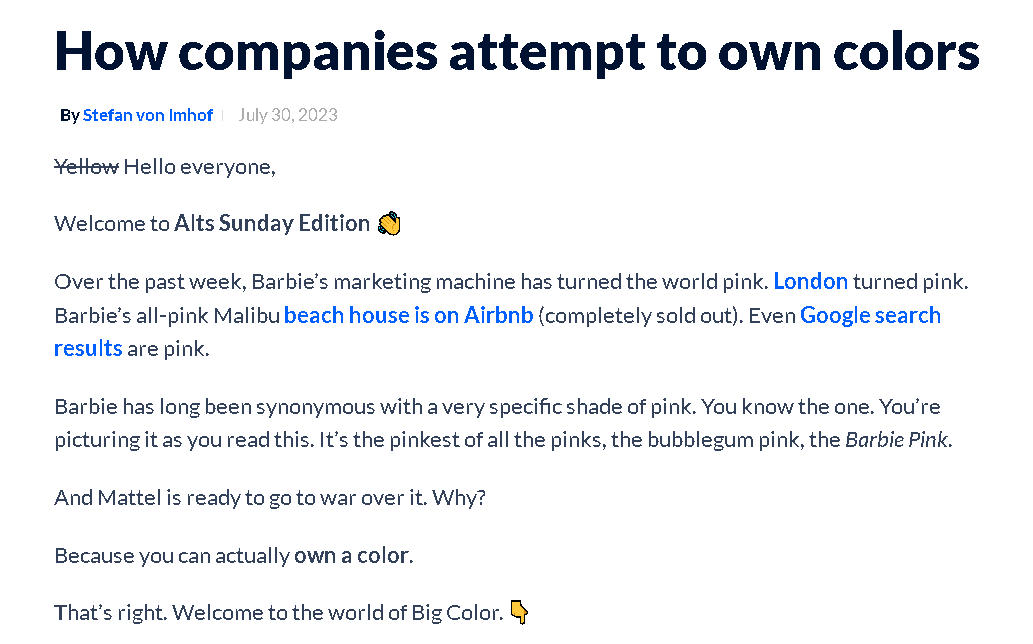
#6 Piggyback With a Holiday
Holidays are fantastic for newsletters. When a holiday comes around, your intro should instantly tap into your readers’ already positive feelings about it.
“Spooky Savings This Halloween!” or “New Year, New You: Unwrap Our January Gems.” These headlines are catchy and timely, tapping into the holiday spirit already on your subscriber’s mind.
And get this: holiday-themed emails can significantly uplift open rates. How significant? Research by Yes Marketing and the 2016 Email Marketing Metrics Benchmark Study revealed that holiday emails enjoy a 5 – 15% higher open rate. It’s a clear signal: subscribers are likelier to open an email when the intro resonates with the current holiday vibe.
So, kick off your newsletter with a holiday shout-out. It’s not just festive; it’s strategic. Using holidays as a springboard makes your intro instantly more relatable and engaging. Whether it’s leveraging the charm of Valentine’s Day or the gratitude of Thanksgiving, a holiday-themed introduction sets the right tone for the rest of your message.
Remember, people love holidays! And it’s all about making that first connection count.
Check out a sample of all the holiday-themed templates you can use.
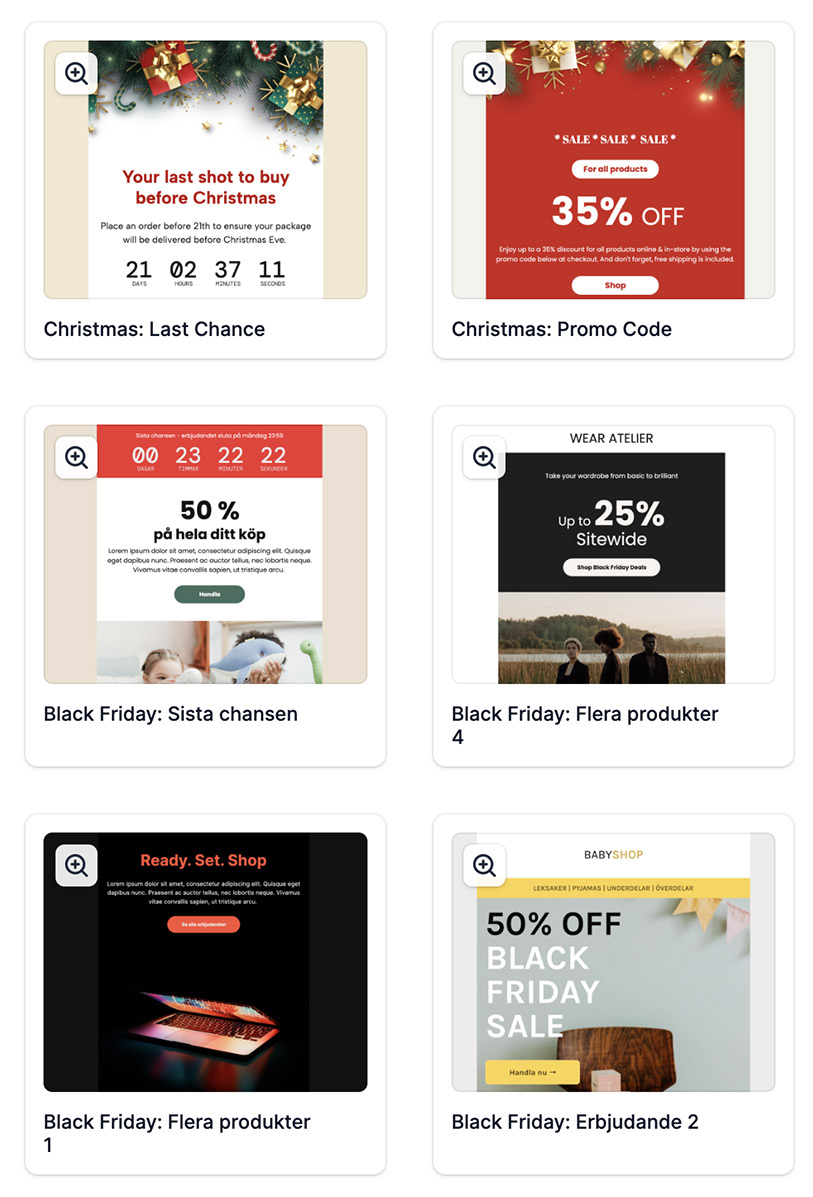
#7 Start With a Relevant (or Shocking) Quote or Statistic
Let’s talk about starting your newsletter with a bang—or, more specifically, a shocking quote or statistic.
Picture this: You open a newsletter, and the first thing you see is a stat that stops you in your tracks. Something like, “Did you know that 90% of our ocean’s big fish populations are depleted?” (National Geographic).
Or maybe you encounter a quote that makes you think: “Change is the end result of all true learning.” – Leo Buscaglia.
These are tried and true ways to start your newsletters because they get people hooked and interested in where you are going next.
Humans are naturally curious creatures. We see a bold statement, and we want the scoop. The hook draws us in, eager for more. And when it comes to email marketing, that initial hook is gold. Plus, you immediately establish authority with your audience and show you know your stuff. Just make sure you back up your stats with links to trustworthy sources.
For example, suppose you’re sharing a newsletter on digital marketing trends. You could introduce a relevant and impressive statistic like ‘Time to Get Personal: 74% of Businesses Attribute Their Success to Personalized Marketing.’ A stat like that grabs the readers’ attention and sets the stage for the information to follow. You’ll then want to understand precisely what that stat means to you and how your audience can use your ideas to succeed.
The key is to ensure the quote or statistic is relevant, illuminating, and engaging. Remember, an effective email newsletter introduction isn’t just a gateway; it’s a tool that draws your target audience further into the relevant information. You can even use it in your subject line, too.
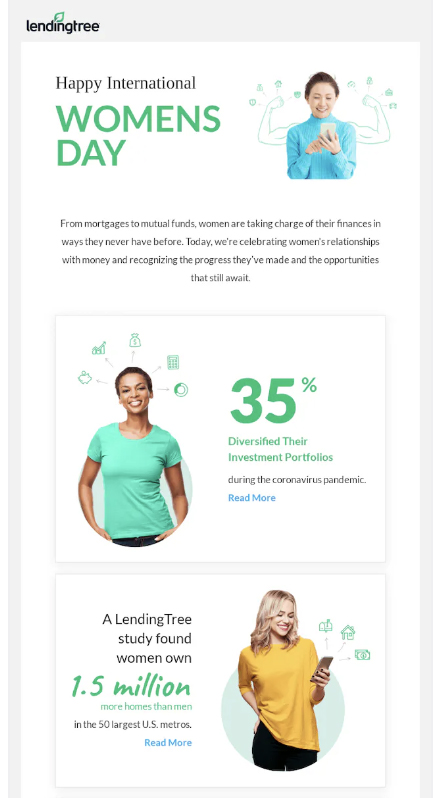
#8 Use Images, Memes, Short Video, Etc.
Consider opening an email and being greeted by text, an image, a meme, or even a short video that packs a punch. It’s like walking into a party where the host hands you a drink immediately—you’re instantly engaged and in a good mood. That’s the power of visual content in your newsletter intros.
Why go visual? Because our brains are wired to respond to images. In fact, articles with image win 94% more views than those without. That’s a staggering number. And when it comes to emails, the data sings the same tune.
Remember we talked about people’s attention span getting shorter in the intro? Images help get your message across in milliseconds.
Get a Newsletter gets this and offers an array of image-friendly templates to make your visuals pop. Whether you want to insert that perfectly timed meme, a breathtaking photo, or a GIF that gets everyone chuckling, these templates ensure your visuals don’t just add to the email—they enhance it.

Think about it. A meme can convey your message with humor and brevity, cutting through the noise. A short video can tease content in a way text alone never could, inviting subscribers to dive deeper.
And since using templates allows you to quickly and seamlessly integrate these visuals, there’s no reason not to add a ton of visual value for your readers.
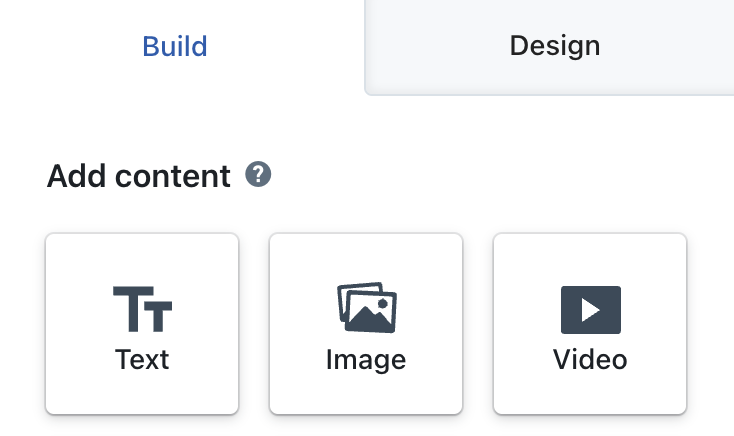
Advanced Tips for Crafting Compelling Introductions
Before diving in, remember that the best newsletter intros grab attention, provide value, and make readers eager for more. They are also tailored to the unique preferences of your audience.
Here are some quick tips to get the most out of your newsletters.
- Optimize Introduction Length: Keep it short enough to maintain interest but long enough to convey value. Aim for a balance that teases content without overwhelming it.
- Embrace A/B Testing: Experiment with different styles of introductions to see what resonates with both new subscribers and your regulars — test variations in length, tone, and content to refine your approach based on real feedback and metrics such as click-through rates.
- Ensure Mobile-Friendliness: With most emails opened on mobile devices, your intro must read well on small screens. This means concise text, responsive design, and fast-loading images.
- Leverage Resources: Use templates and checklists from platforms like Canva to get started, then customize with your brand’s unique voice and message to create a resource library.
- Incorporate a Relevant Image: “A picture is worth a thousand words.” This holds true for newsletter introductions. Including a relevant image can instantly convey the theme or mood of your newsletter, and a stunning visual can capture attention more effectively than text alone.
- Personalize It: Personalized subject lines increase open rates. You can quickly and easily personalize your newsletter with Get a Newsletter’s easy-to-use personalization features.
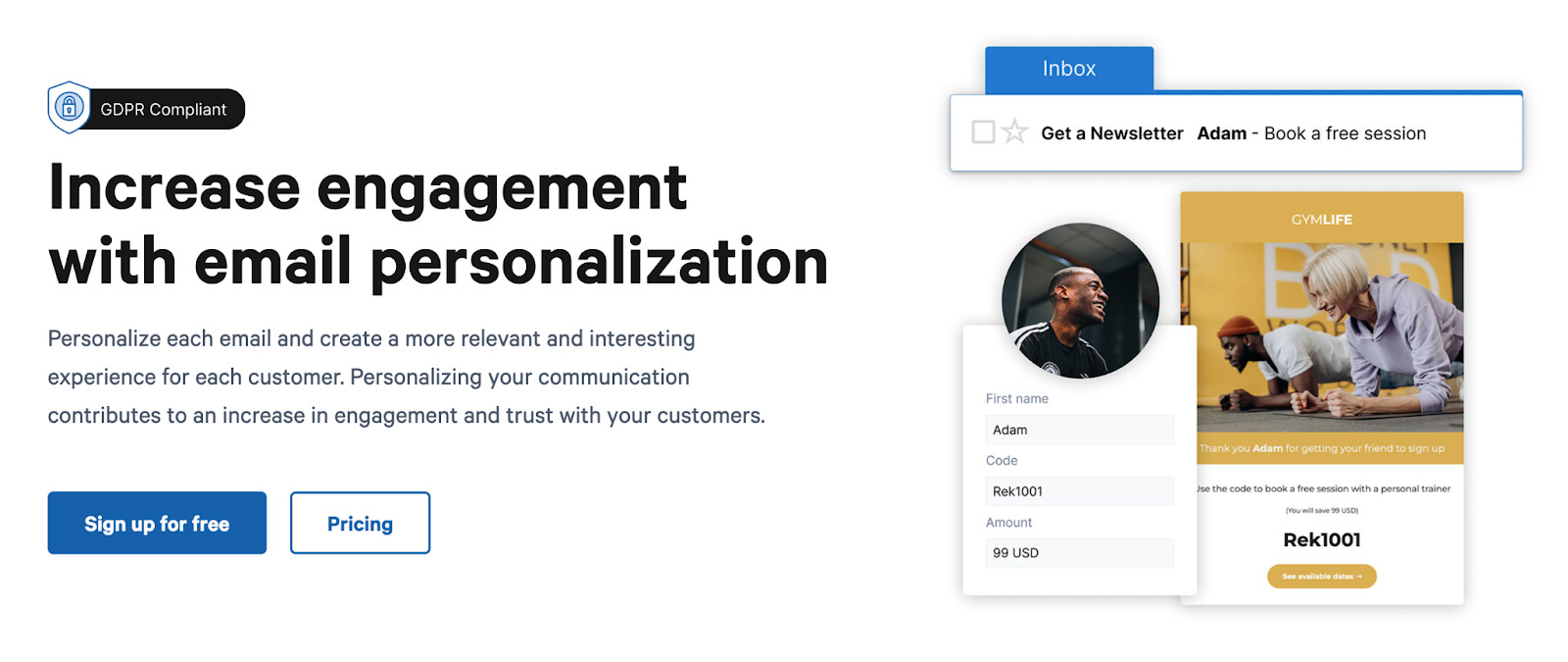
Mastering newsletter introductions is a blend of art and analytics. By focusing on brevity, testing, mobile optimization, and utilizing available resources, you can craft intros that catch the eye and compel readers to stay engaged. Keep iterating and stay creative!
Wrapping Up
Ready to start or improve your newsletter? The key is to have a great intro.
Your introduction can make or break your reader’s engagement. From highlighting milestones to injecting urgency, each strategy we’ve discussed is your ticket to capturing attention in an inbox overflowing with distractions.
And don’t forget about visuals. You’re not just speaking to your audience; you’re showing them, instantly connecting on a level words take time to reach.
Want to create better newsletter introductions (and newsletters in general) faster?
Get a Newsletter turns the insights you’ve just read about into action. Our templates aren’t just about aesthetics; they’re about effectiveness, designed to make your weekly or monthly newsletters stand out and resonate. With easy-to-use features that cater to any strategy we’ve mentioned, crafting an engaging newsletter becomes less of a task and more of a creative journey.
So, why settle for ordinary when you can stand out? Elevate your email game from good to unforgettable. Start exploring templates and newsletter ideas today and see the difference for yourself.
Get started with email marketing
Create beautiful email newsletters for free with Get a Newsletter and reach your subscribers and customers in a heartbeat.
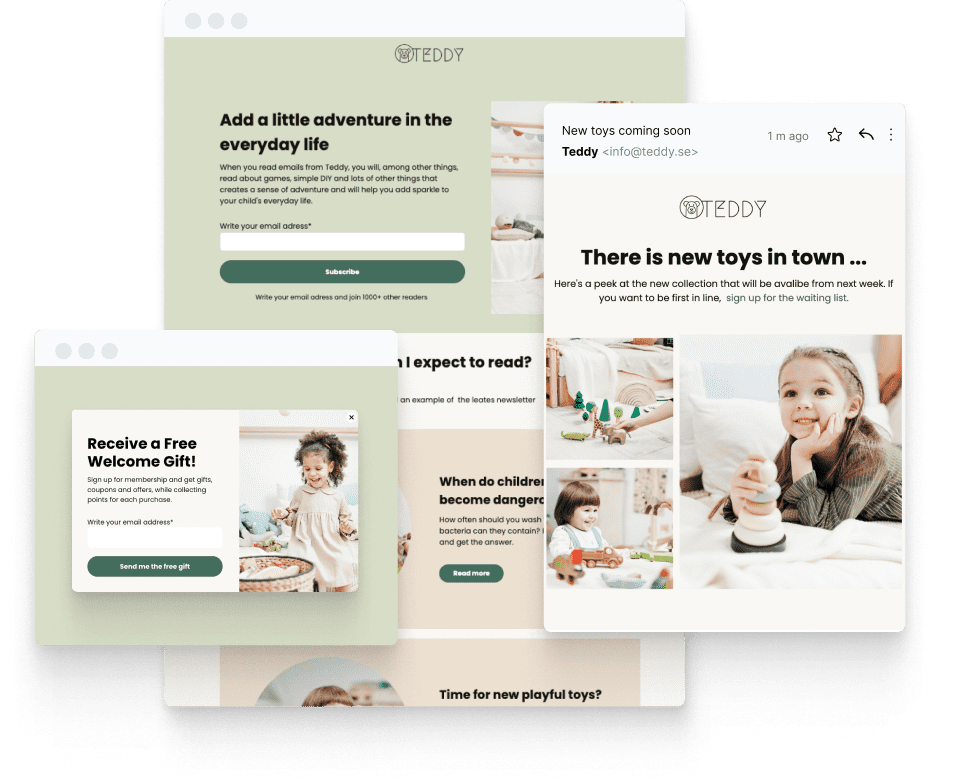

Nichole Stohler
Nichole Stohler co-founded Gateway Private Equity Group, specializing in hotel real estate investments. She is also the creator of NicsGuide.com, a blog dedicated to real estate investing.
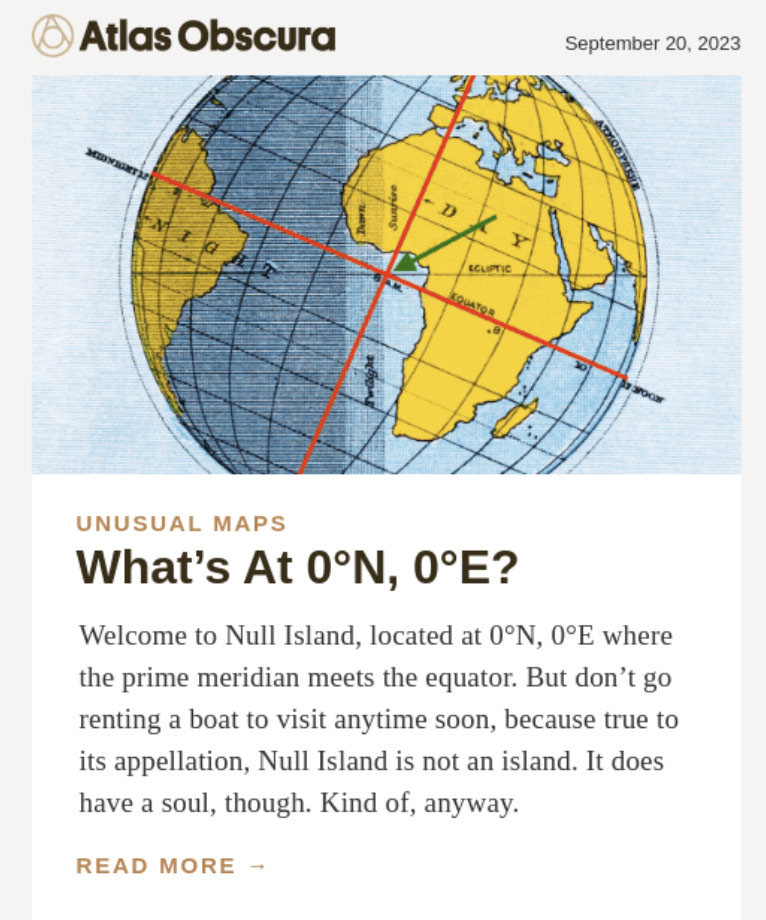
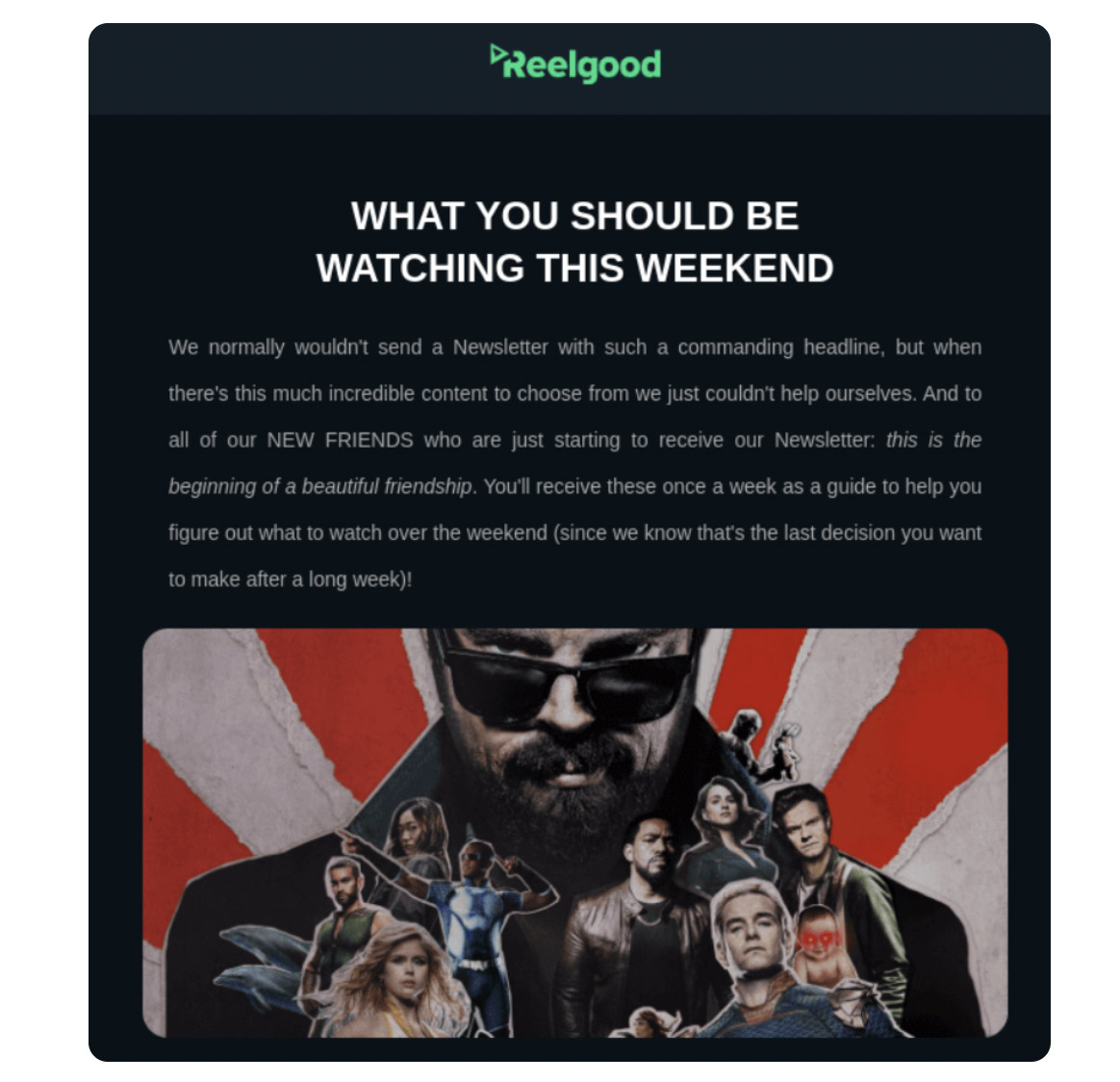
Leave a Reply